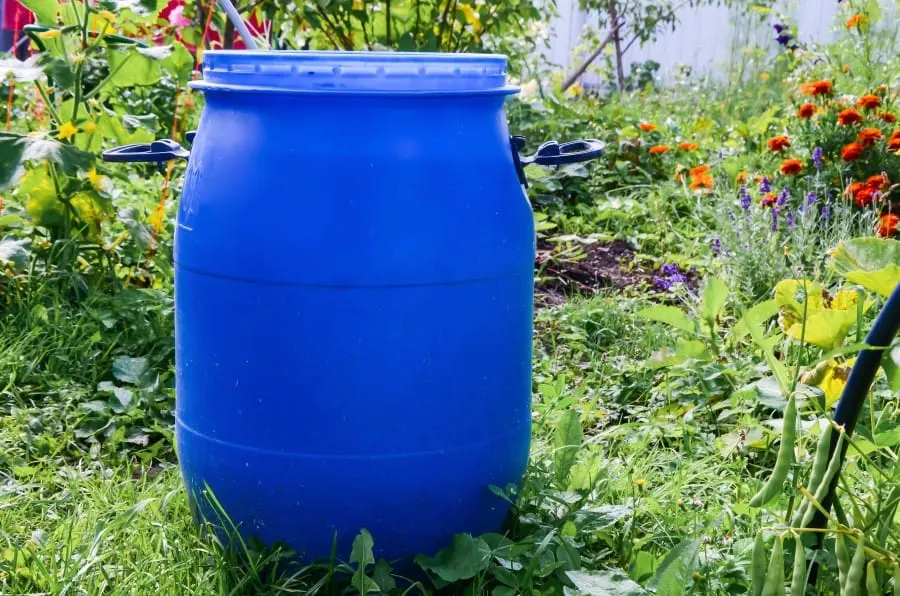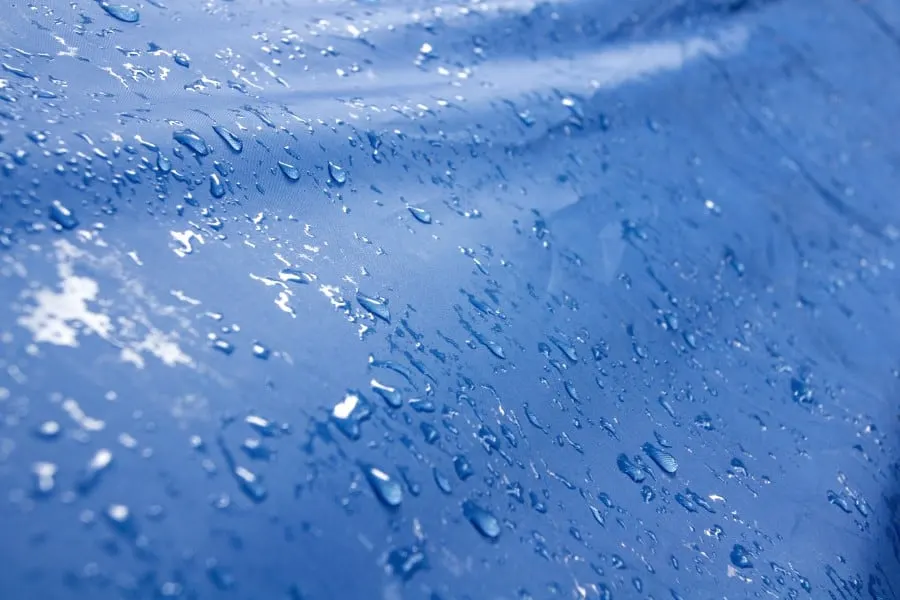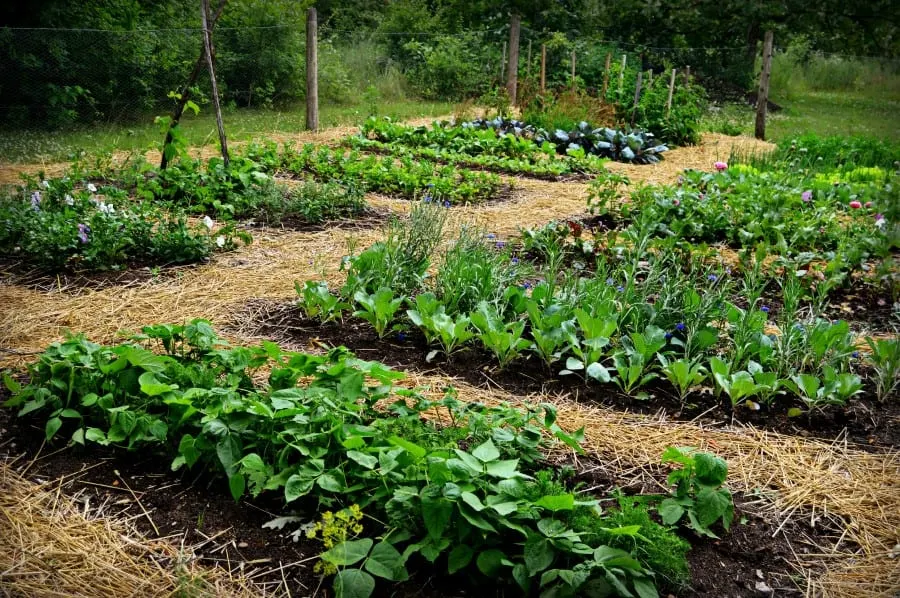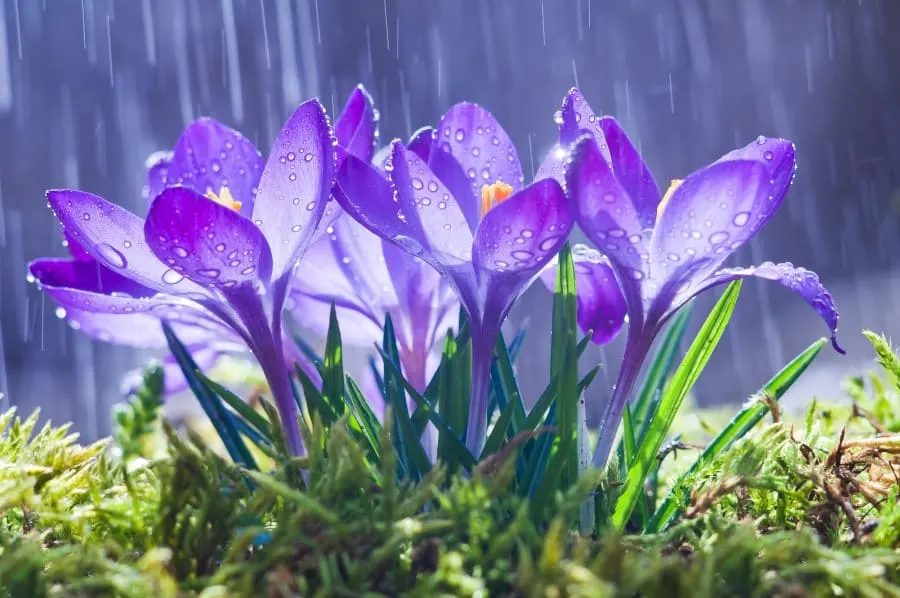If you’re looking for a sustainable option when it comes to watering your garden, you may have considered harnessing rainwater. By using rainwater instead of tap water, you will be able to save money on your utility bills while feeding your plants with a suitable water source. And you are also contributing to a more sustainable way of consuming water.
To harvest rainwater for gardening, using a barrel collection system is one of the best ways. This is a suitable method for anyone, making it easy to collect rainwater with their existing roof and gutter system. The water that is collected can be stored for either immediate or future use.
If the idea of harvesting rainwater is appealing to you, the rest of this article will give you more details on what you will need to get started and what to do with the water once it has been collected.
What are the Methods of Collecting Rainwater?

There are a few different methods to collect rainwater, involving both above-ground and below-ground collection. For someone looking to use this water for their garden, a simple above-ground collection system is sufficient and most suitable. If you are thinking of using rainwater for household use, you will need a more detailed setup, and an underground system may be the better choice for you.
For our purposes, we will explore the most suitable methods for garden use only. Using a rainwater barrel will be the best choice for most households, but another feasible option could be a rainwater tarp. Keep in mind, however, that several states have regulations that only allow for barrel water collection on private property. We will explore these regulations in more detail below.
Rainwater Barrel Collection System
Rainwater barrels are an easy and effective way to get started with collecting rainwater. These are allowed all across the U.S. Even for a beginner, single or multiple barrels are easy to set up and manage. You will be able to quickly experience the benefits of this system when it comes to collecting rainwater for your garden.
This system will take advantage of your gutter system that is already in place. When rain falls on your roof, it travels through the gutters and out through a downspout. Instead of letting this water go to waste, you can place your barrel (or two) below this point, arranging it in a way where the downspout will allow the water to flow into the barrels naturally.
You can observe the particular rainfall patterns on your own roof to decide where to place the barrels for optimal use.
What Equipment Is Needed and How Much Does It Cost?
You will be able to secure the material you need for your rainwater barrel setup pretty easily, and it is possible to do so on a budget. You will have options as well—if you want a barrel that is ready-made for this purpose or if you prefer to construct one yourself.
There are barrels on the market that are specifically designed for rainwater collection. This type of product will typically come with a spout on the bottom and a mesh lid and can be found in both new and recycled varieties.
You also have the option of constructing your own rainwater barrel from a previously used 55-gallon (208-liter) drum. To do this, you will need to drill a hole for the spout and make sure that you seal it properly. You will also need to ensure that the lid has an opening for the water to enter, and it is best to line it with some type of mesh in order to keep debris out of your water source.
Below is a video covering how to build a rain water barrel system that connects to a gutter.
Depending on your preferences, you are probably looking at spending between $70 and $300 on the necessary equipment for this water collection system. If you are choosing the DIY path, be sure to choose a barrel that is marked “food safe.”
By making this choice, you will be sure that no harmful substances will leak into your water supply. Food safe plastic may be blue or have the numbers “1, 2, 4, 5” printed inside the recycling triangle found on the bottom of the barrel.
Tips to Get Started
You can place your barrel on a stand a bit off the ground to access the spout more easily. This increased height will also allow you to use a barrel with the spout as close to the base as possible. In order to provide some elevation, you can use some cinder blocks or other sturdy material that will give an elevated platform for the barrels. Make sure that the ground is even, and the barrels are able to sit with stability.
You may need to cut the top of your barrel in order to allow a place for the water to enter. Creating this opening can be done with a jigsaw, and you can determine the size of the hole in order to meet your needs.
If you are concerned about mosquitos, you can place a lid on your barrel to prevent them from entering and breeding in your rainwater collection device. Keep an eye on your barrel as well, as you may need more than one if you live in an area that receives a lot of rain. You can always transfer water to another storage container if your collection barrel is becoming too full.
Tarp Collection System

While rainwater collection barrels are an optimal choice for just about every home, it is still worth exploring another option that may be applicable to you. If you have additional property beyond your immediate house, a rainwater tarp might be a good option for you. By using the natural curves of the land, you are able to take advantage of your property’s elevation changes to collect rainwater.
However, this type of water collection may go against your state regulations if you live in an area that only allows for barrel collection. Be sure to check your local regulations before choosing the appropriate rainwater collection system for your home
To use a rain collection tarp, you should lay a tarp out on a flat surface at a higher elevation. This might be at the top of a small hill. A corner of the tarp would feed into a pipe that would flow down to a lower elevation. At the lower elevation, you can place a collection container where the pipe will feed the water into. The elevation change is key to let gravity pull the water down to the collection point.
What Equipment Is Needed and How Much Does It Cost?
For the price of a large tarp and a bit of piping, all available at your local hardware store, you can easily get started with a rainwater collection tarp on a budget. Depending on the size of the tarp and the length of the pipe and barrel or bucket you choose, you should be able to get started between $20-100.
How to Store Rainwater for Gardening
Now that you know how to get started collecting rainwater on your property, you may be wondering what to do with it once it has been collected. You can keep it in the collection barrel if that is suitable for you, but you may also use simple storage solutions if the barrel becomes full.
You could use just about anything from watering cans to other barrels and containers. Simply make sure you have clean and food-safe containers that you can store your rainwater in.
How Long Can I Store Rainwater? Does It Go Bad?
Luckily, you can store rainwater for as long as you need. You can use it straight away or keep it for when you are experiencing a dry spout. If you are planning on storing what you have collected, it is best to choose an opaque container. If water is sitting for a long time and sunlight is able to enter through a translucent container, it is quite possible that algae will begin to grow.
In addition to storing your rainwater in a way that does not give it access to sunlight, make sure the container is sealed so mosquitos cannot enter and lay eggs in your water either. Large containers can cause a hazard to small children and animals, so make sure that the lid is secured if you are planning on storing a large quantity.
How Much Water Storage Will I Need Based on the Size of My Garden?

At this point, you may be wondering how much storage will be necessary based on how many plants you have. Let’s take a look at some rough estimates of how much water you will need based on the size of the garden.
Of course, these numbers will vary based on the specific conditions of your garden, your climate, and the type if plants you are growing. But in general. as a rule of thumb, every square foot of garden you have will require a half-gallon (1.9-liter) of water.
So, if you have a garden bed that is ten square feet (0.9 square meters), this means you will need 5 gallons (18.9 liters) of water to get through a week of watering your plants. This means that a full 55-gallon (208-liter) barrel could last you 11 weeks in your small garden.
In order to calculate how much water you will need for your garden, you can use this equation:
(size of garden in square feet) x (length of the dry season in weeks) x (0.5 gallons)
This simple calculation will give you an idea of how much water you will need for your garden for any particular length of time. You can also use this calculation to see how long the water you have collected will last.
How Often Should I Clean My Rainwater Storage System?
In order to make sure your water will be usable after storage, it’s important to maintain clean collection and storage containers. You should check on the cleanliness of the containers regularly, as well as do a complete cleaning at least once a year.
Once a year, empty your barrel completely and give it a good scrub. There will be a buildup of debris coming from your roof and gutters, and it is important to make sure all of this has been removed from time to time. Be sure to scrub both the bottom of the barrel as well as the sides.
In between the annual cleanings, you can use a mesh filter to keep the larger debris from your roof and gutter from entering into the barrel’s main rainwater supply. Keep an eye on the filter and the barrel and be sure to remove large debris from the container whenever you notice them.
Does Rainwater Need to be Treated Before Using it in the Garden?
If you are looking to use rainwater to only water your plants, it is generally unnecessary to treat the water before use. However, this answer changes if you plan on using your collected rainwater as your water source for your home.
If you intend to shift from just using it in the garden to using it for your household use, you will need to install a treatment system. This is typically where an underground system is needed.
The reason that the collected rainwater does not need to be treated is that you are catching it before it is hitting the ground. Water becomes contaminated as it washes over streets with surfaces with chemicals and contaminants. It may take on some organic debris from your roof, but it will not mix with car oil and other chemicals the way it would when it washes over the pavement.
Is Rainwater the Best Kind of Water for Plants?

Rainwater is advantageous for your garden for a variety of reasons. Not only is it a (relatively) free source of water, but it also doesn’t contain salt, fluoride, or other additives that are normally present in tap water but that are not optimal to use in your garden. If you’re concerned with the particular tap water available in your area, rainwater is a good solution for you since it is as close to organic as possible.
Is it Okay to Collect Rainwater for Gardening in my State?
Collecting rainwater is an amazing method of harnessing a natural resource. There is no federal regulation in the United States that impacts those who wish to collect it on their property. State laws, overall, have been updated over the years to allow for rainwater collection to some degree all over the country.
There are some variations when it comes to each state, with some offering restrictions while others offer incentives. We will take a look at a few states have notable variations.
The following few paragraphs discuss local laws and tax programs, but these change constantly, so make sure to consult with local officials and/or websites as well as your tax advisor before you act upon any of the information provided.
Colorado
In the past, Colorado has had some of the strictest regulations when it comes to rainwater collection. The laws have changed in the last decade, however, allowing Colorado residents more freedom in this area. It is legal to collect rainwater from your roof into a barrel on your own property, but you are limited to a two-barrel rainwater catchment system.
This restriction means that you cannot have more than 110 gallons (416 liters) of rainwater collection capacity. It is also explicitly stated in the law that this is for use on your property only.
Oregon
In Oregon, residents are only allowed to catch rainwater from their roofs. This regulation means that if you are interested in a more in-depth underground catchment system, you would need to consult local authorities before further planning.
Nevada
In Nevada, rainwater collection is legal if you have obtained a “water right” from your local government. This specification allows the government to be sure you are not using your water collection for commercial purposes. They reserve the ability to revoke this water right if you use your collected rainwater for anything besides personal use.
Incentives and Restrictions of Rainwater Harvesting in the U.S.
Tax Credits and Incentives
Texas, Virginia, and Rhode Island have tax credits in place for purchasing the necessary materials that you will need for your system. This means that if you are a resident of these states, save your receipts and be ready for some savings when filing your state taxes.
California has encouraged residents to set up rainwater collection systems. San Diego, a particularly dry region, will give residents financial incentives for each gallon collected on their property.
For Personal Use Only
Even though it is legal in all states to collect rainwater, it should be noted that most state laws are explicitly clear that whatever rainwater you do collect should only be used by you an dyour household. In most cases, you are prohibited from selling the rainwater you collect.
For more detailed explanations for your state, you can visit the World Water Reserve guide here.
Closing Thoughts
When it comes to setting up a system that will allow you to harvest rainwater for gardening, choosing a barrel collection system will allow you to comply with most state regulations, while easily collecting the rainfall that is already hitting your roof.
Even beginners and people on a budget can set up a rainwater barrel collection system, making it a great option for everyone looking to start collecting their own rainwater supply for their gardens.
Here are Some of my Favorite Gardening Products and Tools
Thank you for reading this article. I hope you found it helpful for growing some new plants in your home or garden. Here are some products I like that I hope you’ll also find helpful. These are affiliate links, and I am compensated for referring traffic. But in all honesty, these are the exact product that I use or recommend to everyone.
Soil: For high-quality soil, I really like Fox Farm Ocean Forest. I do all my growing in containers and this soil has worked great for me. I like how they use nutrient-rich contents like earthworm castings, bat guano, and composted crab and fish.
Fertilizer: Currently I am using a seaweed-based organic fertilizer call Neptunes Harvest. This is a great milder fertilizer option if you want to use something organic. If you want a more powerful fertilizer, I recommend Fox Farm Liquid Nutrient Trio, lots of people have had great growing success with this product.
Pruning Shears: Pruning shears are one of the most useful gardening tools to have because it’s important to prune your plants to keep them healthy. The pruning shears I recommend are the Gonicc 8’’ pruning shears. I like them because they are built sturdy and work both on bigger and smaller plants, so you don’t need to have multiple pruning shears.
spicytrio.com is a participant in the Amazon Services LLC Associates Program, an affiliate advertising program designed to provide a means for sites to earn advertising fees by advertising and linking to Amazon.com. spicytrio.com also participates in affiliate programs with other sites. spicytrio.com is compensated for referring traffic and business to these companies.
